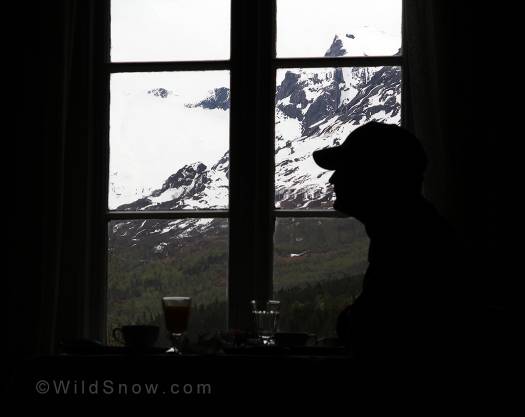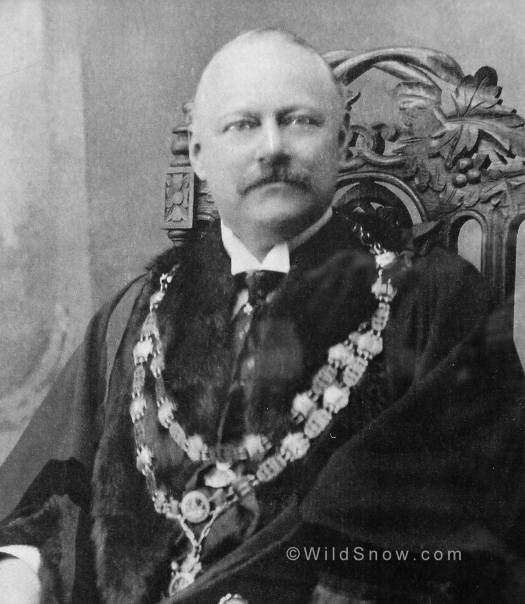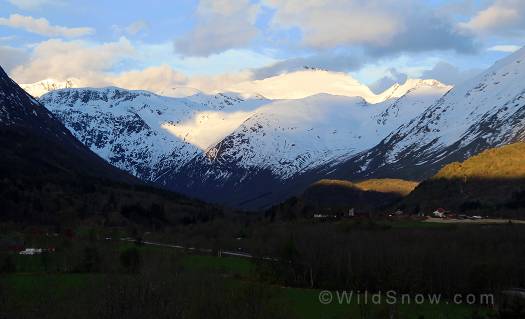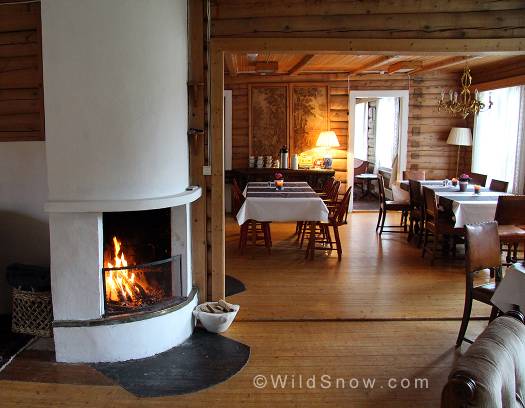Somehow I’ve fallen into a life that slips me from one paradise to another like a kid going down the ultimate water slide. The latest turn took me to perhaps the most perfect place of all, especially for a mountain girl who loves the sea.
Majestic snowy mountains soar from a pristine valley, a sapphire fjord glistens down the road and on a hill, with far reaching views, sits a luxurious basecamp, Phillipshaugen Lodge.
When Lou was invited to Jotunheimen, he wanted me to join him afterwards. I wasn’t enthusiastic about leaving Colorado in the spring, my favorite time of year. But how could I resist a trip to a land to which I’d never been?
Phillipshaugen is my first ski touring destination. After dragging my heavy ski bag upstairs, I open the window in our room and look out at the scene of a mountaineer’s dreams — an inviting range of gleaming white peaks. They are near enough for easy access and that is our plan for tomorrow.
But now, jet lagged beyond the point of sleep, I wander outside to a comfortable lawn chair. The birds are tweeting, the mountain air is clear and soft, and the sun gently massages my tired self. I doze for perhaps an hour in a state of deep relaxation that doesn’t come often in this busy world.
Refreshed and hungry, it is time for dinner. Fresh caught cod wrapped in bacon is scrumptious. Local potatoes taste so good I quiz the cook about the ingredients. She says it is nothing special, maybe a dash of nutmeg.

The sun hung low on the horizon casting alpenglow across the peaks that we hope to explore tomorrow.
Lou and I have a thing about 80’s pop music. Like a nagging headache, it haunts us constantly, even at the quaintest European gasthauses. We immediately notice the lack of it, or any piped in elevator music, at Phillipshaugen. When I compliment the owner about the tranquility of the place, he says the only music they play is birdsong. Moreover, they made a conscious decision to not provide televisions in the rooms (while still having a robust wi-fi signal). Lovely.
Phillipshaugen was built in 1899 by Ethelbert Lort-Phillips and his wife Louisa. I would have liked to have had dinner with them in their cozy lodge.
Ethelbert and Louisa shared a life of adventure, traveling to Africa in the 1800’s to discover bird and plant species. A passion for fishing brought them to inner Norway. They found ample salmon in the crystal clear streams and fjords, but few tourist accommodations in the poor farm villages. So Louisa designed lodges in the Scottish Highland style of her homeland and industrious Ethelbert built them. Four remain and are in use today.
I’ve inducted Louisa into the WildSnow Girl Hall of Fame. I don’t know if she skied, but she held her own in the outdoors. During a time when few women traveled to untamed places or participated in the sporting life, she explored the wild with gusto and style.
Salmon fishing was a passion for many Brits in the late 1800’s and they eagerly traveled to the comfortable lodges Ethelbert and Louisa built. It was popular to keep fishing journals recording the expertise of the fishermen, weight of fish and how hard it fought before it was landed. Lady Louisa was one of the first women to appear in the stats. One summer day in 1891, she caught 19 salmon. The largest was 31 pounds for a total of 269 pounds of fish. Not bad for a Victorian socialite.

Hunter, ornithologist, and connoisseur of beautiful places, Ethelbert Lort-Phillips would be pleased with the new owners of Philliphaugen as they roll out the red carpet to guests in his beloved lodge.
How to get there:
From Oslo, take the train to Oppdal, or take a plane to Molde or Kristiansund. From there, bus service, taxis or shuttle are available. Contact Phillipshaugen Lodge and they will gladly help arrange transport.
WildSnow Girl, Lisa Dawson, is the luckiest girl in the world. Also known as Mrs. WildSnow.com, she tests whatever gear she wants. She gives the WildSnow family of websites the feminine voice.


